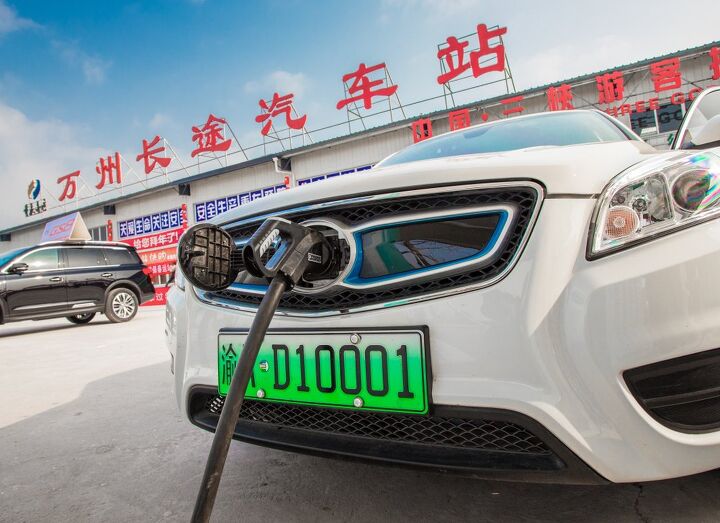Chinese Auto Sales Reportedly Rebounding Robustly

The China Association of Automobile Manufacturers (CAAM) is reporting its home market grew 74.9 percent in March, resulting in nearly 2.53 million new-vehicle deliveries. While we’re often skeptical of the organization’s rosy predictions and tallies, it’s claiming the recent sales surge is the direct result of how bad things had been in the previous year. China instituted some of the most aggressive lockdown protocols of any nation in the initial stages of the pandemic and had already been struggling with a declining vehicle market in 2019.
CAAM is making no illusions about the gains being based on anything other than how horrible March of 2020 was and doesn’t want to overpromise moving ahead. It’s a warning that the semiconductor shortage will likely worsen as the year continues, dampening Q2 projections. But the organization has not yet revised its forecast for next year’s overall sales. Last December, CAMM predicted roughly 26.3 million vehicles would be delivered by the end of 2021 and appears to be running with that target.
Electric vehicles, something China has been pushing with mixed success, also saw their numbers rebounding hard. CAAM estimated a nearly 240 percent improvement over the previous March, with the vast majority being fully electric products.
CAAM has been reporting consistently favorable industry growth for about twelve months now. While the rest of the world spent February through June of 2020 selling a fraction of what would have been normal, China reported a surprisingly brief hiccup that coincided with the Lunar New Year — when sales would have been suppressed by the extended holiday anyway. By March of 2020, most nations were still reeling from supply chain issues created by lockdowns. However, CAAM said the things were once again moving in the right direction.
The industry is claiming high levels of growth vs this time last year in general, with global manufacturers claiming double-digit boosts over the period. According to J.D. Power, the U.S. auto market swelled 26 percent (retail) in the first quarter and saw overall light-vehicle sales grow by 12 percent. But CAAM had industrywide new-vehicle sales in China rebounding by a whopping 76 percent over the same timeframe. Perhaps the last year was harder on the Chinese market than we originally anticipated.
[Image: Xujun/Shutterstock]

A staunch consumer advocate tracking industry trends and regulation. Before joining TTAC, Matt spent a decade working for marketing and research firms based in NYC. Clients included several of the world’s largest automakers, global tire brands, and aftermarket part suppliers. Dissatisfied with the corporate world and resentful of having to wear suits everyday, he pivoted to writing about cars. Since then, that man has become an ardent supporter of the right-to-repair movement, been interviewed on the auto industry by national radio broadcasts, driven more rental cars than anyone ever should, participated in amateur rallying events, and received the requisite minimum training as sanctioned by the SCCA. Handy with a wrench, Matt grew up surrounded by Detroit auto workers and managed to get a pizza delivery job before he was legally eligible. He later found himself driving box trucks through Manhattan, guaranteeing future sympathy for actual truckers. He continues to conduct research pertaining to the automotive sector as an independent contractor and has since moved back to his native Michigan, closer to where the cars are born. A contrarian, Matt claims to prefer understeer — stating that front and all-wheel drive vehicles cater best to his driving style.
More by Matt Posky
Latest Car Reviews
Read moreLatest Product Reviews
Read moreRecent Comments
- Calrson Fan Jeff - Agree with what you said. I think currently an EV pick-up could work in a commercial/fleet application. As someone on this site stated, w/current tech. battery vehicles just do not scale well. EBFlex - No one wanted to hate the Cyber Truck more than me but I can't ignore all the new technology and innovative thinking that went into it. There is a lot I like about it. GM, Ford & Ram should incorporate some it's design cues into their ICE trucks.
- Michael S6 Very confusing if the move is permanent or temporary.
- Jrhurren Worked in Detroit 18 years, live 20 minutes away. Ren Cen is a gem, but a very terrible design inside. I’m surprised GM stuck it out as long as they did there.
- Carson D I thought that this was going to be a comparison of BFGoodrich's different truck tires.
- Tassos Jong-iL North Korea is saving pokemon cards and amibos to buy GM in 10 years, we hope.


































Comments
Join the conversation
Like all statistics out of China, it's not verifiable and probably not accurate. It's what the "Party" wants said.
Why that car on the photo above has hose attached to radiator? Adding coolant?